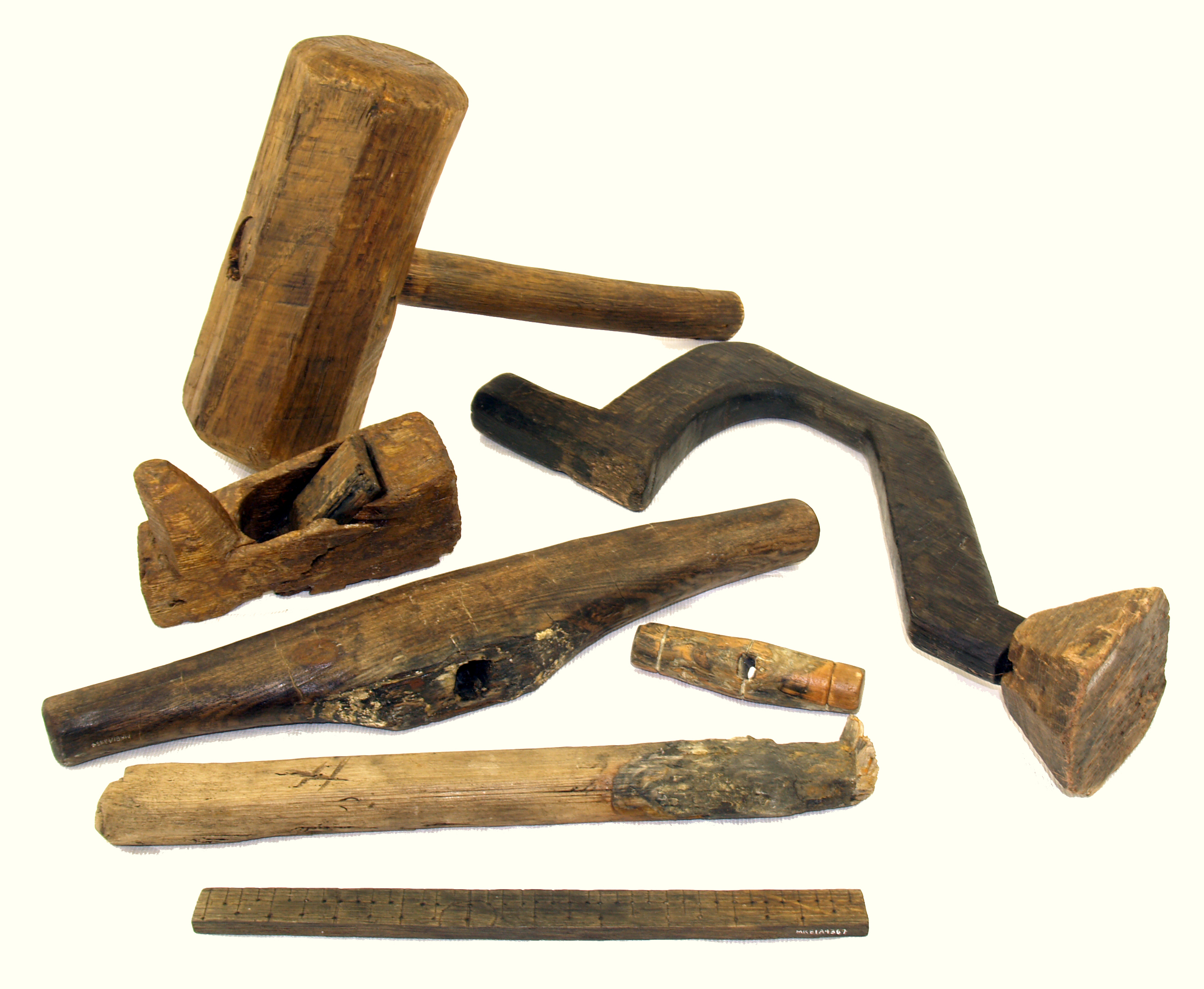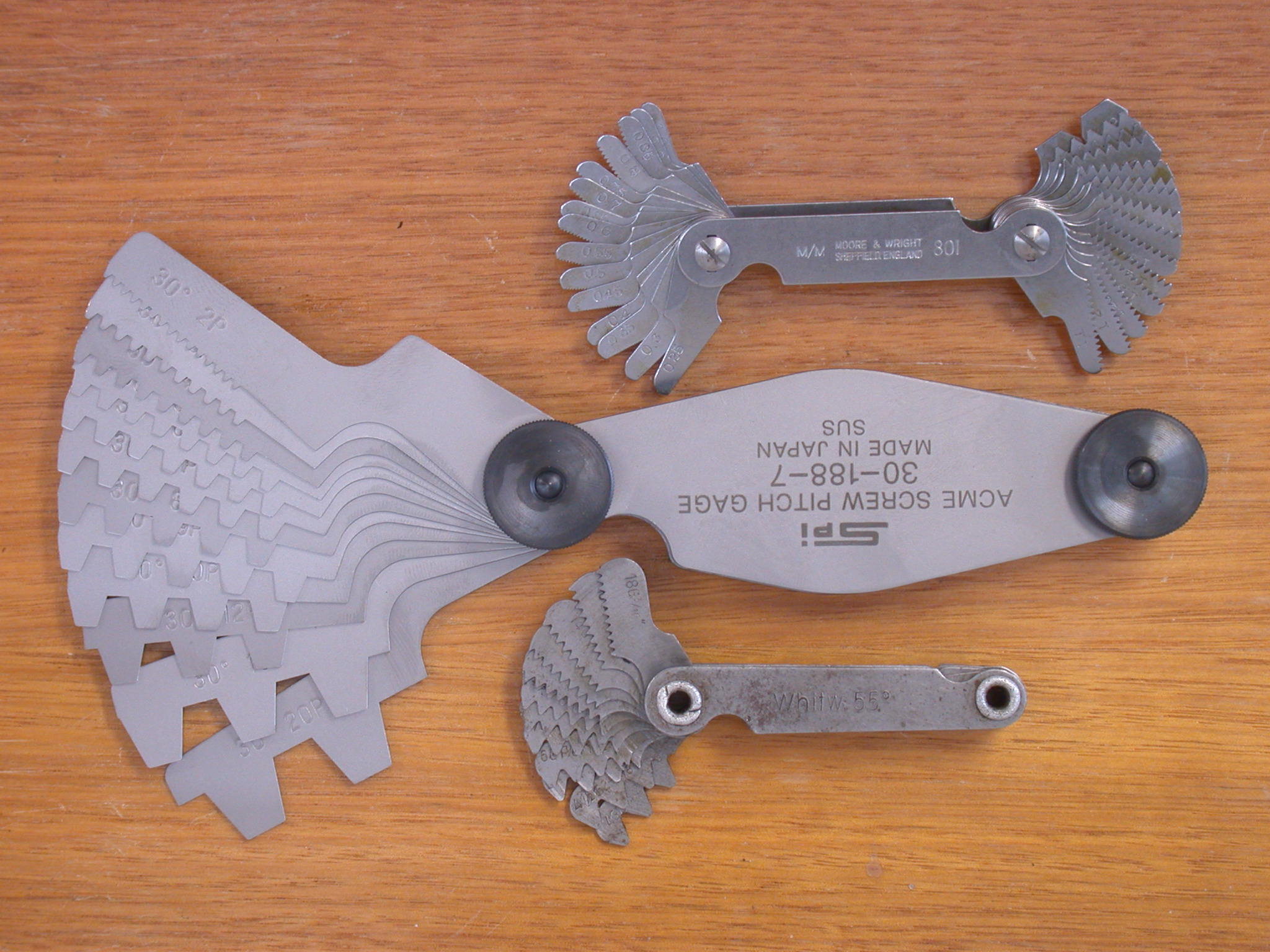|
Radius Gauge
A radius gauge, also known as a fillet gauge, is a tool used to measure the radius of an object. Radius gauges require a bright light behind the object to be measured. The gauge is placed against the edge to be checked and any light leakage between the blade and edge indicates a mismatch that requires correction. A good set of gauges will offer both convex and concave sections, and allow for their application in awkward locations. Every leaf has a different radius, for example with radius intervals of 0.25 mm or 0.5 mm. The material of the leaves is stainless steel Stainless steel, also known as inox, corrosion-resistant steel (CRES), or rustless steel, is an iron-based alloy that contains chromium, making it resistant to rust and corrosion. Stainless steel's resistance to corrosion comes from its chromi .... Each gauge is one of two types; either internal or external, which are used to check the radius of inner and outer surfaces, respectively. See also * Th ... [...More Info...] [...Related Items...] OR: [Wikipedia] [Google] [Baidu] |
Tool
A tool is an Physical object, object that can extend an individual's ability to modify features of the surrounding environment or help them accomplish a particular task. Although many Tool use by animals, animals use simple tools, only human beings, whose use of stone tools dates back hundreds of millennia, have been observed using tools to make other tools. Early human tools, made of such materials as Rock (geology), stone, bone, and wood, were used for the preparation of food, hunting, the manufacture of weapons, and the working of materials to produce clothing and useful Cultural artifact, artifacts and crafts such as pottery, along with the construction of housing, businesses, infrastructure, and transportation. The development of metalworking made additional types of tools possible. Harnessing energy sources, such as Working animal, animal power, wind, or steam, allowed increasingly complex tools to produce an even larger range of items, with the Industrial Revolution markin ... [...More Info...] [...Related Items...] OR: [Wikipedia] [Google] [Baidu] |
Radius
In classical geometry, a radius (: radii or radiuses) of a circle or sphere is any of the line segments from its Centre (geometry), center to its perimeter, and in more modern usage, it is also their length. The radius of a regular polygon is the line segment or distance from its center to any of its Vertex (geometry), vertices. The name comes from the Latin ''radius'', meaning ray but also the spoke of a chariot wheel.Definition of Radius at dictionary.reference.com. Accessed on 2009-08-08. The typical abbreviation and mathematical symbol for radius is ''R'' or ''r''. By extension, the diameter ''D'' is defined as twice the radius:Definition of radius at mathwords.com. ... [...More Info...] [...Related Items...] OR: [Wikipedia] [Google] [Baidu] |
Convex
Convex or convexity may refer to: Science and technology * Convex lens, in optics Mathematics * Convex set, containing the whole line segment that joins points ** Convex polygon, a polygon which encloses a convex set of points ** Convex polytope, a polytope with a convex set of points ** Convex metric space, a generalization of the convexity notion in abstract metric spaces * Convex function In mathematics, a real-valued function is called convex if the line segment between any two distinct points on the graph of a function, graph of the function lies above or on the graph between the two points. Equivalently, a function is conve ..., when the line segment between any two points on the graph of the function lies above or on the graph * Convex conjugate, of a function * Convexity (algebraic geometry), a restrictive technical condition for algebraic varieties originally introduced to analyze Kontsevich moduli spaces Economics and finance * Convexity (finance), second ... [...More Info...] [...Related Items...] OR: [Wikipedia] [Google] [Baidu] |
Concave
Concave or concavity may refer to: Science and technology * Concave lens * Concave mirror Mathematics * Concave function, the negative of a convex function * Concave polygon A simple polygon that is not convex is called concave, non-convex or reentrant. A concave polygon will always have at least one reflex interior angle—that is, an angle with a measure that is between 180° degrees and 360° degrees exclusive. ..., a polygon which is not convex * Concave set * The concavity of a function, determined by its second derivative See also * {{disambiguation, math ... [...More Info...] [...Related Items...] OR: [Wikipedia] [Google] [Baidu] |
Stainless Steel
Stainless steel, also known as inox, corrosion-resistant steel (CRES), or rustless steel, is an iron-based alloy that contains chromium, making it resistant to rust and corrosion. Stainless steel's resistance to corrosion comes from its chromium content of 11% or more, which forms a Passivation (chemistry), passive film that protects the material and can self-healing material, self-heal when exposed to oxygen. It can be further alloyed with elements like molybdenum, carbon, nickel and nitrogen to enhance specific properties for various applications. The alloy's properties, such as luster and resistance to corrosion, are useful in many applications. Stainless steel can be rolled into Sheet metal, sheets, plates, bars, wire, and tubing. These can be used in cookware, cutlery, surgical instruments, major appliances, vehicles, construction material in large buildings, industrial equipment (e.g., in paper mills, chemical plants, water treatment), and storage tanks and tankers for ch ... [...More Info...] [...Related Items...] OR: [Wikipedia] [Google] [Baidu] |
Thread Pitch Gauge
A thread gauge, also known as a screw gauge or pitch gauge, is used to measure the pitch or lead of a screw thread. Thread pitch gauges are used as a reference tool in determining the pitch of a thread that is on a screw or in a tapped hole. This tool is not used as a precision measuring instrument, rather it allows the user to determine the profile of the given thread and quickly categorize the thread by shape and pitch. This device also saves time, in that it removes the need for the user to measure and calculate the pitch of the threaded item. Usage To use a thread gauge, the user must first match the type of thread to the gauge. For example, attempting to measure metric threads with an imperial gauge will not return accurate results. To determine the correct gauge, a process of trial and error may be needed if the screw is of unknown origin. Once the correct gauge is determined, the user should extend one of the leaves of the tool and press it against the threaded p ... [...More Info...] [...Related Items...] OR: [Wikipedia] [Google] [Baidu] |
Spherometer
A spherometer is an instrument used for the precise measurement of the radius of curvature of a curved surface. Originally, these instruments were primarily used by opticians to measure the curvature of the surface of a lens. Design A spherometer usually consists of: *A frame with three legs, arranged in an equilateral triangle of known radius. The outer legs of some spherometers can be moved to a set of inner holes in order to accommodate a smaller surface. The lower ends of the legs are finely tapered and terminate in hemispheres. *A central leg, which can be raised or lowered via a screw. *A reading device for measuring the distance the central leg is moved. Often this consists of a marked dial attached to the top of the screw and a vertical scale attached to the frame. This both indicates the number of turns of the screw and serves as an index for reading the divisions on the dial. A lens may be fitted in order to magnify the scale divisions. On new spherometers, the verti ... [...More Info...] [...Related Items...] OR: [Wikipedia] [Google] [Baidu] |
Dimensional Instruments
A ''measuring instrument'' is a device to measurement, measure a physical quantity. In the physical sciences, quality assurance, and engineering, ''measurement'' is the activity of obtaining and comparing physical quantity, physical quantities of real-world physical object, objects and phenomenon, events. Established standard objects and events are used as unit of measurement, ''units'', and the process of measurement gives a number relating the item under study and the referenced unit of measurement. Measuring instruments, and formal test methods which define the instrument's use, are the means by which these relations of numbers are obtained. All measuring instruments are subject to varying degrees of instrument error and measurement uncertainty. These instruments may range from simple objects such as rulers and stopwatches to electron microscopes and particle accelerators. Virtual instrumentation is widely used in the development of modern measuring instruments. Time In the ... [...More Info...] [...Related Items...] OR: [Wikipedia] [Google] [Baidu] |
Metalworking Measuring Instruments
Metalworking is the process of shaping and reshaping metals in order to create useful objects, parts, assemblies, and large scale structures. As a term, it covers a wide and diverse range of processes, skills, and tools for producing objects on every scale: from huge ships, buildings, and bridges, down to precise engine parts and delicate jewellery. The historical roots of metalworking predate recorded history; its use spans cultures, civilizations and millennia. It has evolved from shaping soft, native metals like gold with simple hand tools, through the smelting of ores and hot forging of harder metals like iron, up to and including highly technical modern processes such as machining and welding. It has been used as an industry, a driver of trade, individual hobbies, and in the creation of art; it can be regarded as both a science and a craft. Modern metalworking processes, though diverse and specialized, can be categorized into one of three broad areas known as forming, cuttin ... [...More Info...] [...Related Items...] OR: [Wikipedia] [Google] [Baidu] |






